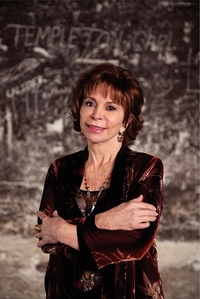PORTRAIT IN SEPIA
Isabel Allende, , trans. by Margaret Sayers Peden. . HarperCollins, $26 (320pp) ISBN 978-0-06-621161-9
In this third work concerning the various and intertwining lives of members of a Chilean family, Allende uses the metaphor of photography as memory. "Each of us chooses the tone for telling his or her own story; I would like to choose the durable clarity of a platinum print, but nothing in my destiny possesses that luminosity. I live among diffuse shadings, veiled mysteries, uncertainties; the tone for telling my life is closer to that of a portrait in sepia," declares Aurora del Valle, protagonist of the tale. Here, Allende picks up where 1999's
Reviewed on: 07/16/2001
Genre: BEA Books
Analog Audio Cassette - 978-0-694-52599-7
Compact Disc - 978-1-0941-5914-0
MP3 CD - 978-1-0941-5915-7
Open Ebook - 400 pages - 978-0-06-225443-6
Other - 400 pages - 978-0-06-304965-9
Paperback - 400 pages - 978-0-06-302173-0
Paperback - 345 pages - 978-84-01-34155-7
Paperback - 304 pages - 978-0-06-089848-9
Paperback - 320 pages - 978-0-06-093636-5
Paperback - 304 pages - 978-0-06-199153-0
Paperback - 448 pages - 978-0-06-621401-6
Paperback - 978-1-5266-9314-3


